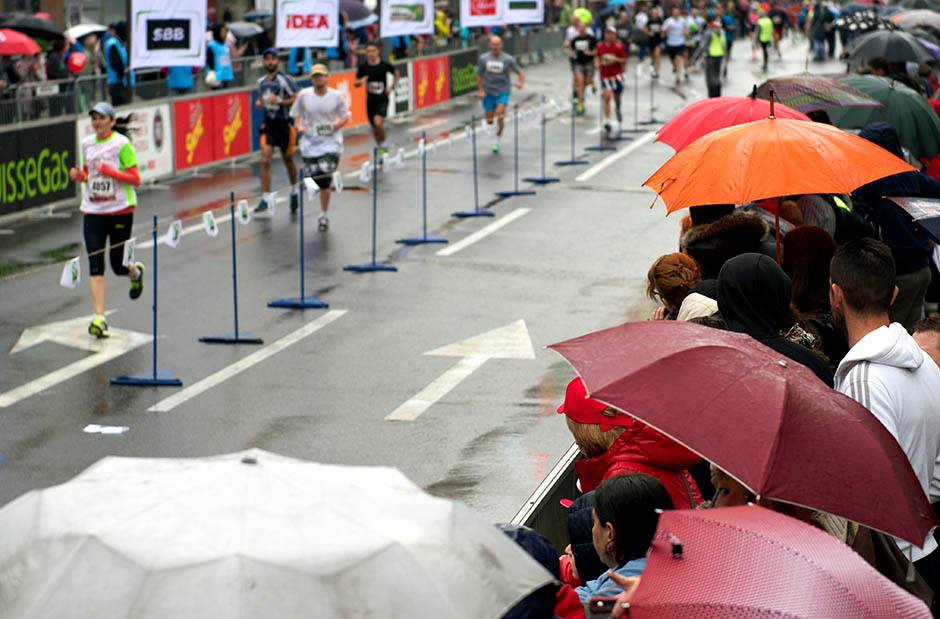Beogradski maraton smo ove godine trčali po kiši. Oblačenje za ovakvu trku može biti problematično. Delimo sa vama nekoliko saveta za oblačenje koji Vam mogu pomoći da trčite po kiši i opet zadovljni završite trku.
Izvor: www.runnersworld.com
How to Dress for Rainy Runs
Dressing for the rain can be tricky, but a developing a flexible running wardrobe will cover you during all kinds of wet runs and races. Here are some suggestions on what to wear:
Hat or Visor: Wearing a hat or visor with a brim will keep the rain out of your eyes. For cold, rainy runs in the 30s or 40s, consider adding a light beanie or headband for warmth. A waterproof cap will help keep your head warm and dry(er). Or, if you don’t mind a MacGyver look, wear a shower cap over your hat or visor (funny-looking, but effective). When it’s above 55 degrees, visors are best—they allow heat to escape more efficiently.
Eyewear: In a driving rain, wearing a pair of light-tinted or clear glasses can help protect your eyes from getting pelted. A good anti-fog lens cleaner will keep your vision clear in the moisture and humidity.
Jacket, Vest, or Trash Bag: Invest in a lightweight, waterproof shell jacket—not necessarily one that’s marketed to runners—to stay dry on cold, rainy runs and during other rainy day activities. These jackets may not breathe as well as running-specific ones, but they are best at keeping rain out. For warmer rainy runs, try an ultra lightweight rain-resistant running jacket or vest. Before a race, use a large garbage bag with a hole poked in the bottom for your head. Fashionistas can use a smaller cinch bag for a better look—I once ran half a marathon in a white bag to stay dry, and my race photos were fabulous.
Lightweight Wicking Apparel in Dark Colors: Wicking apparel is key—it pulls moisture away from your skin, which helps prevent chafing and blisters. Tighter tops and bottoms are less likely to chafe. Light-colored bras, tops, and bottoms become see-through when wet, so stick to darker colors in the rain.
Wicking Socks: Wearing a pair of wicking socks can make all the difference in preventing blisters from developing.
Lube: Use an anti-chafe balm or petroleum jelly on your feet to help prevent blisters and on any other body part that may chafe (arms, nipples, legs, sports bra seam lines, etc.).
When you finish your run, get out of your wet clothes and into dry ones (or a warm shower) immediately. To help your shoes dry, remove the insoles and stuff the shoes with newspaper or paper towels.
